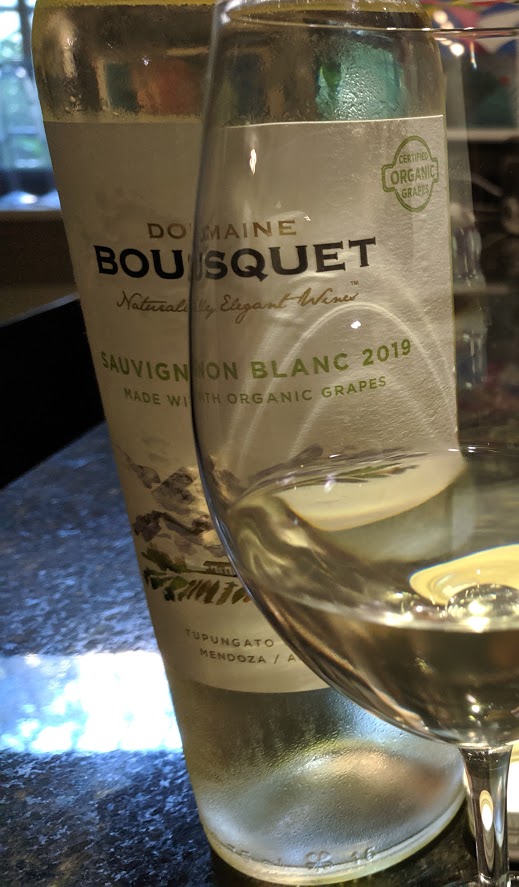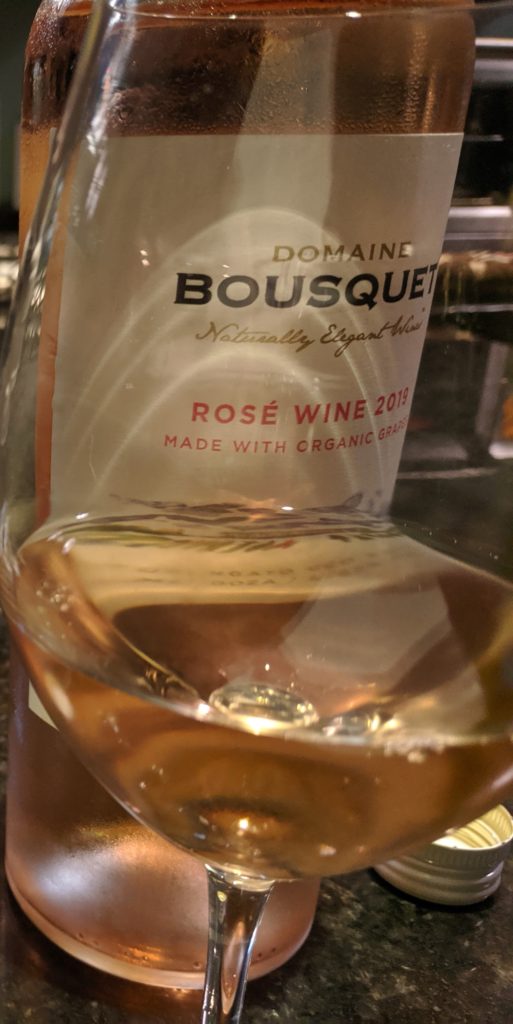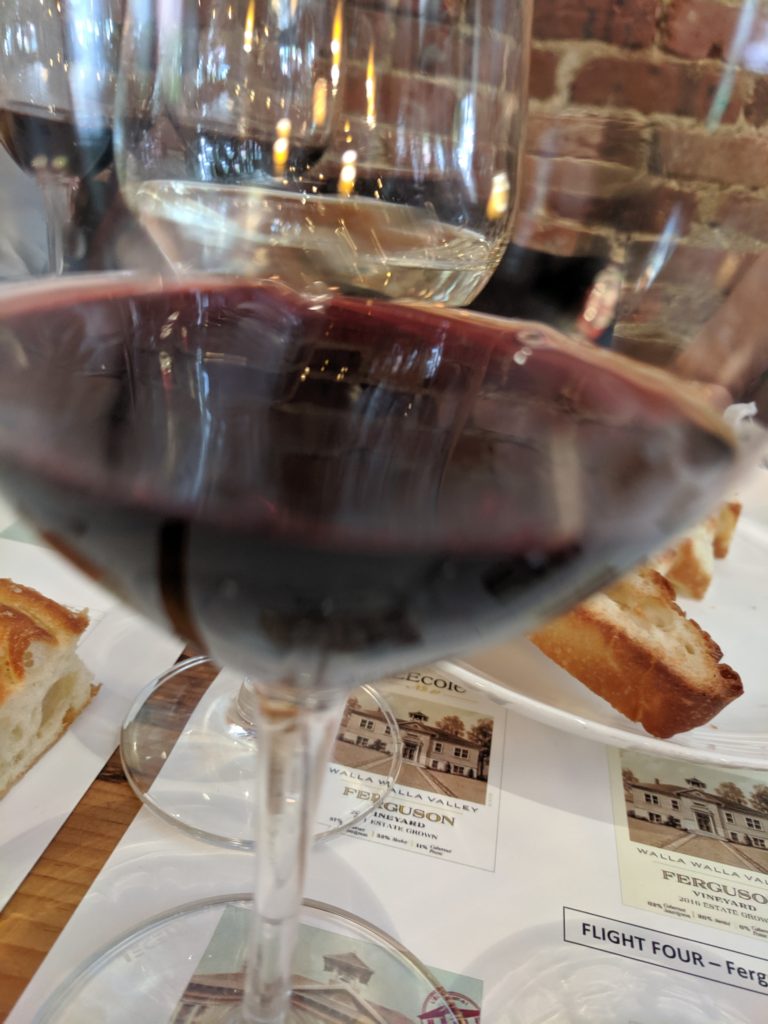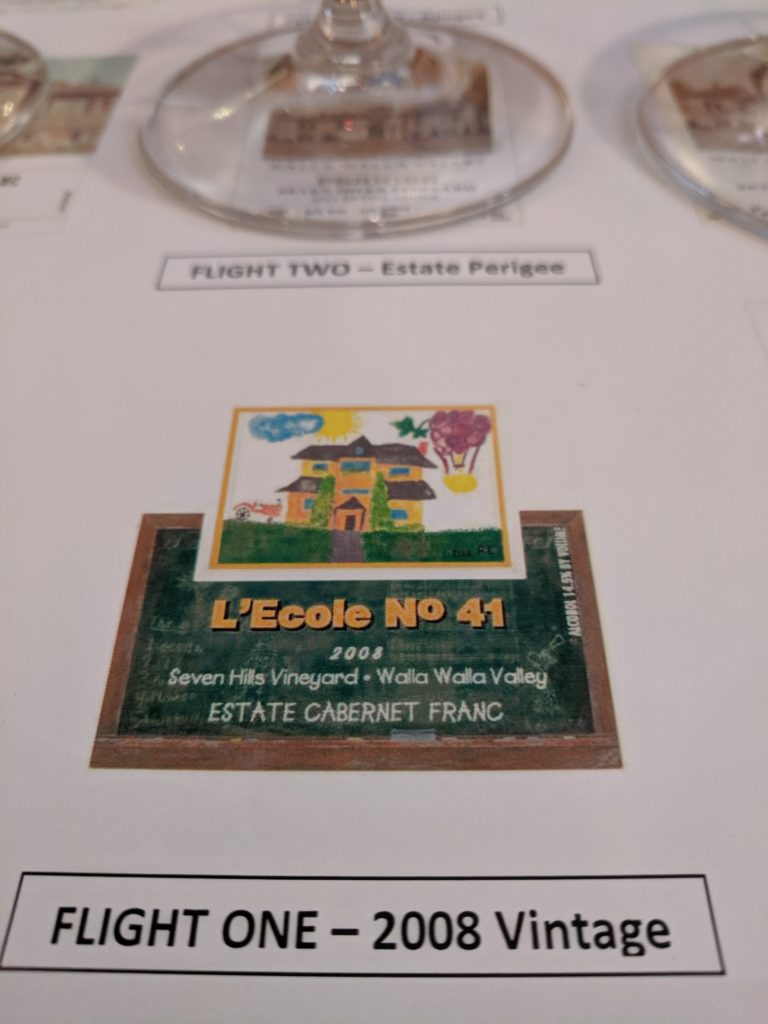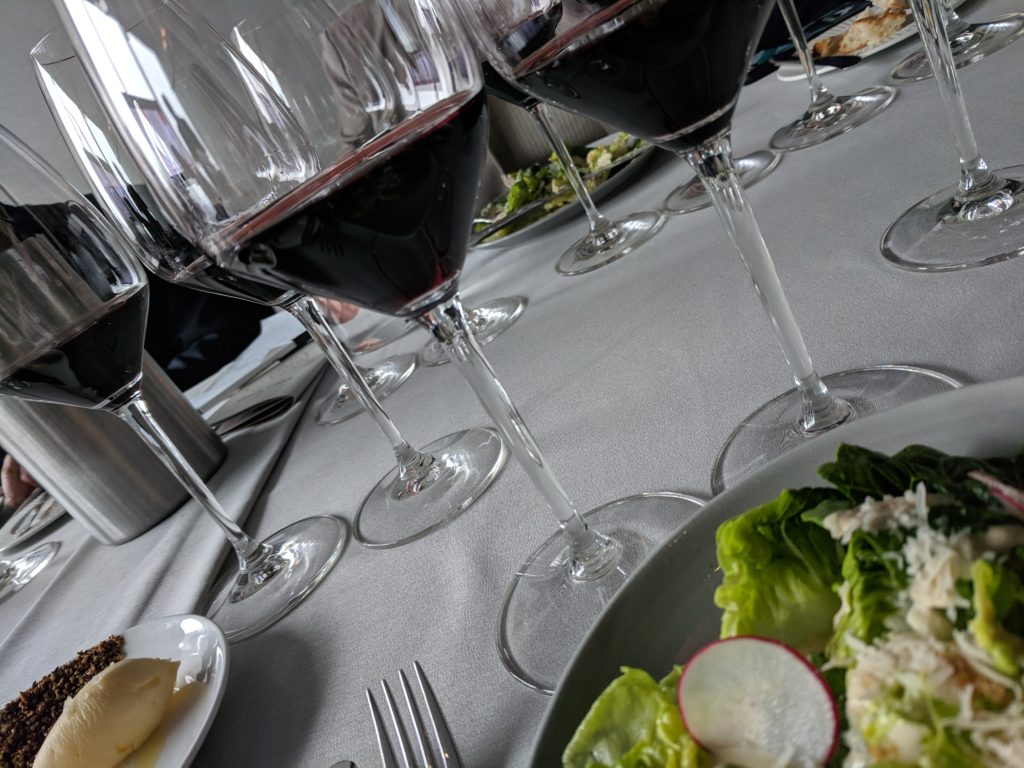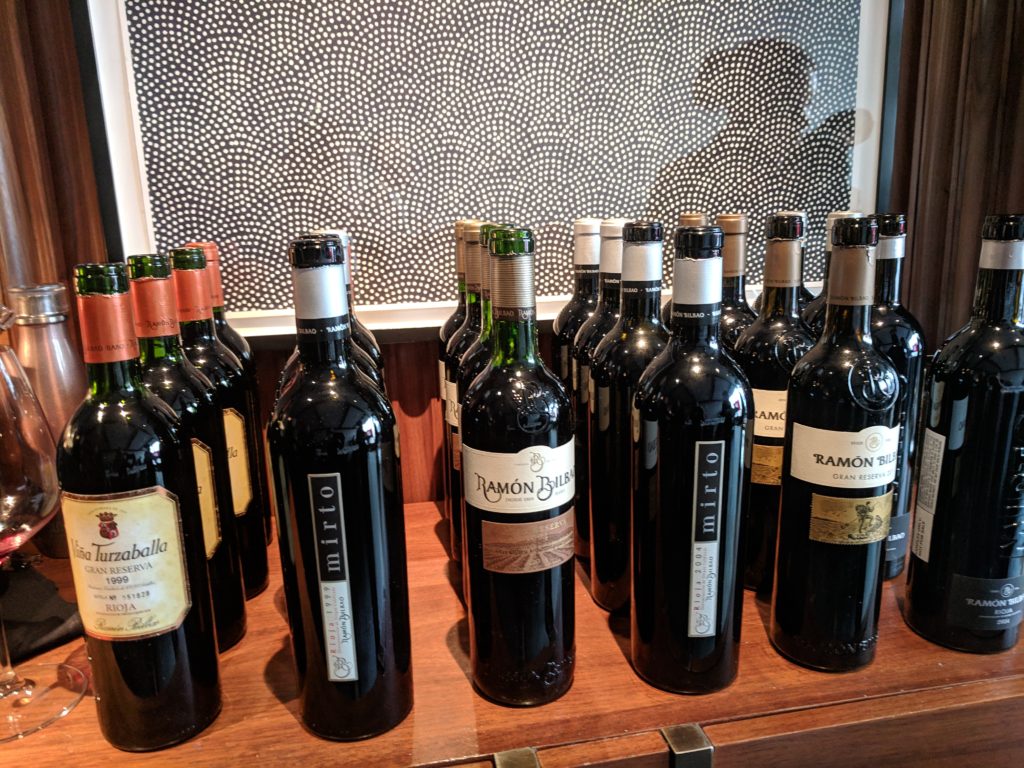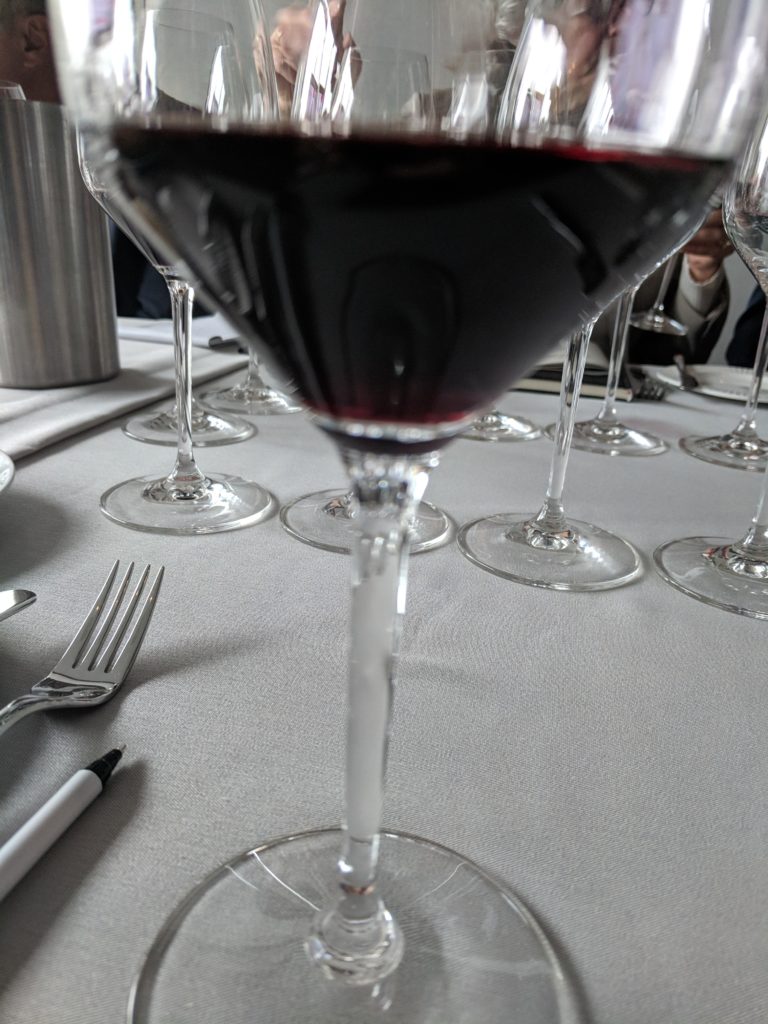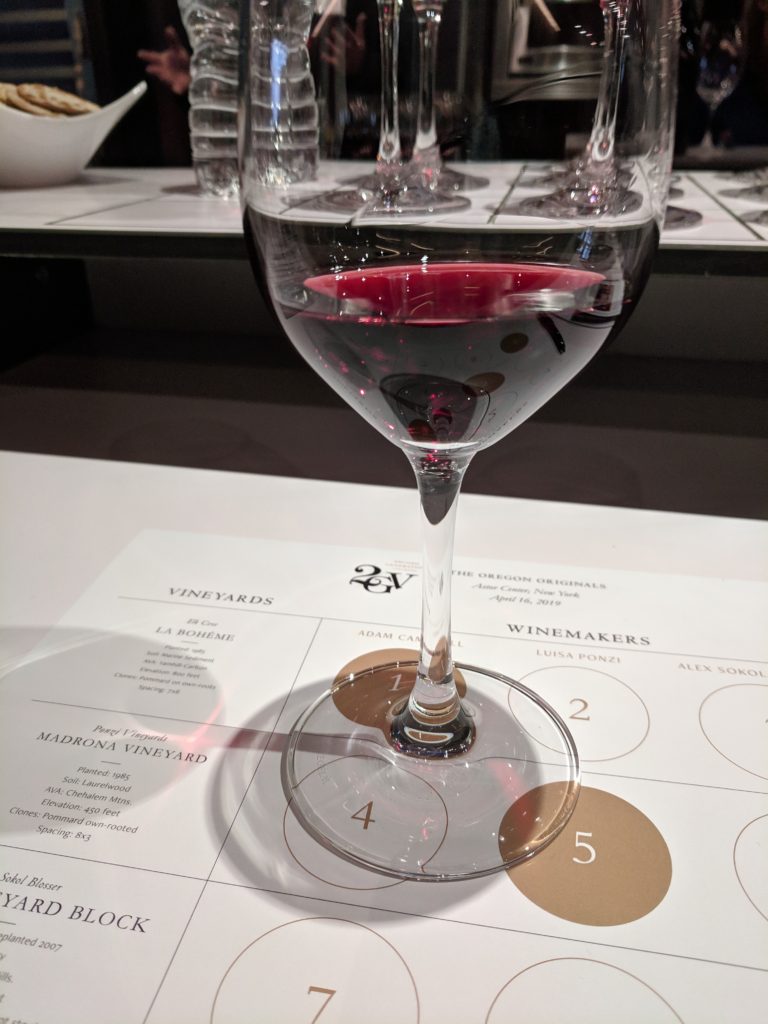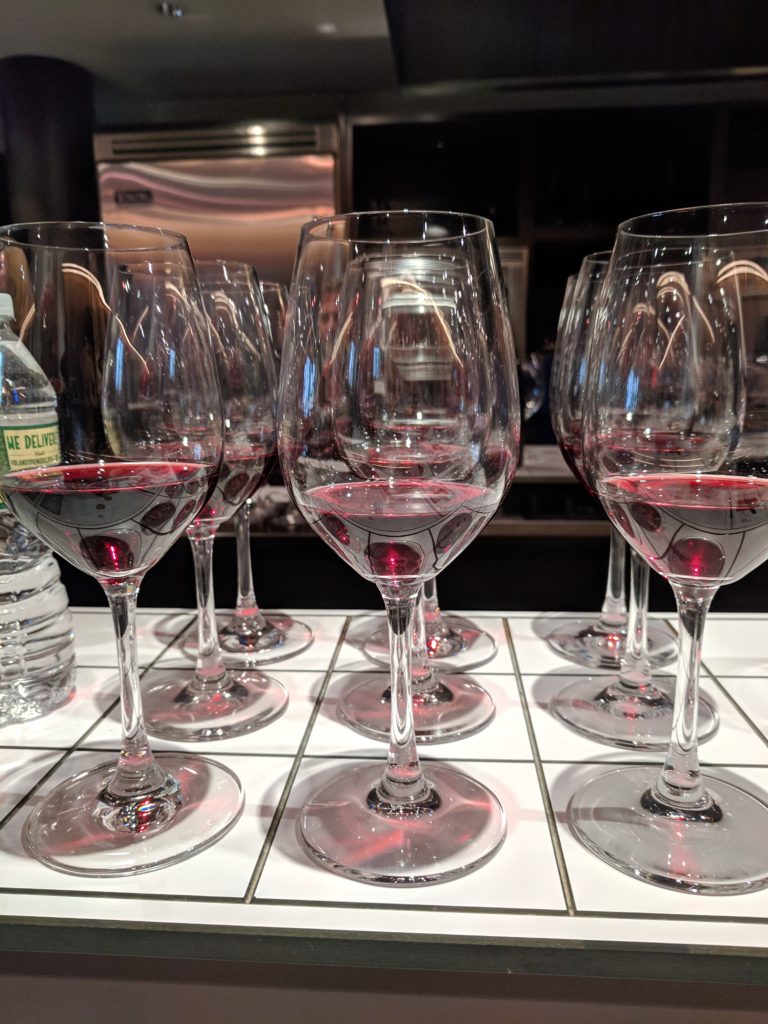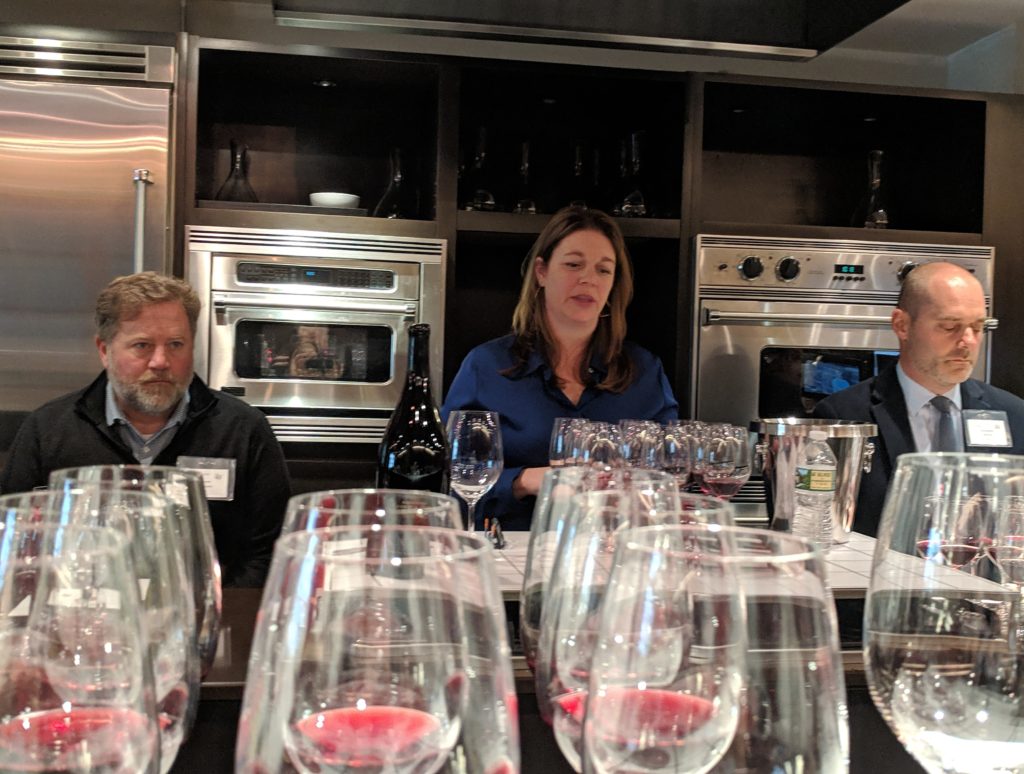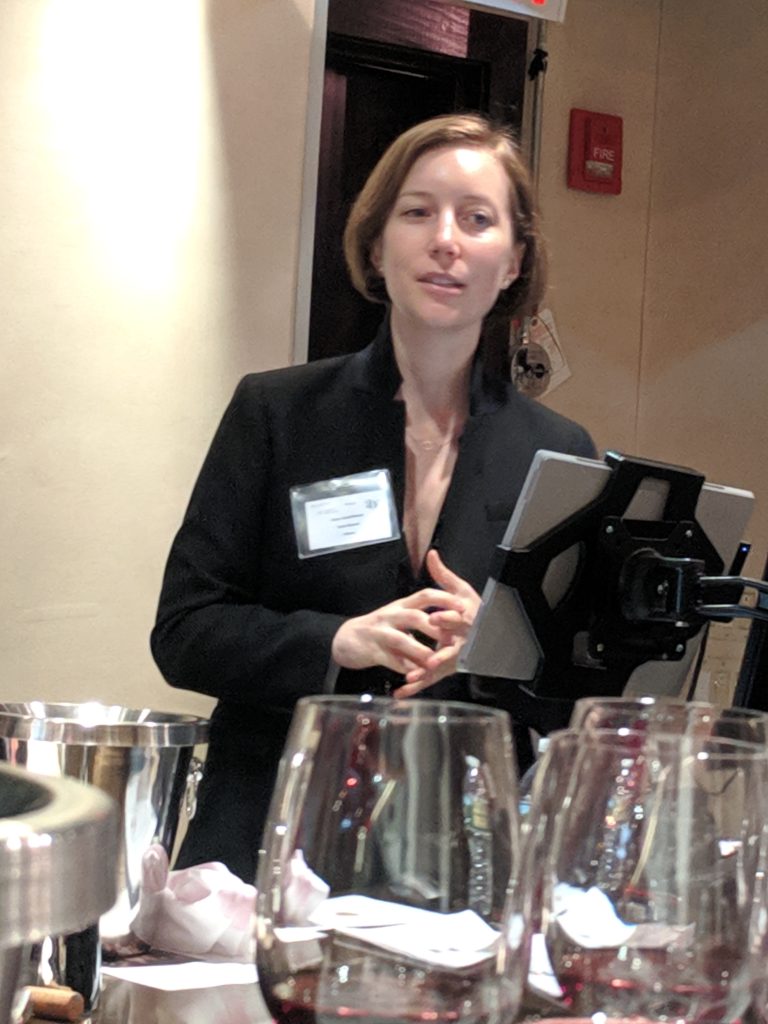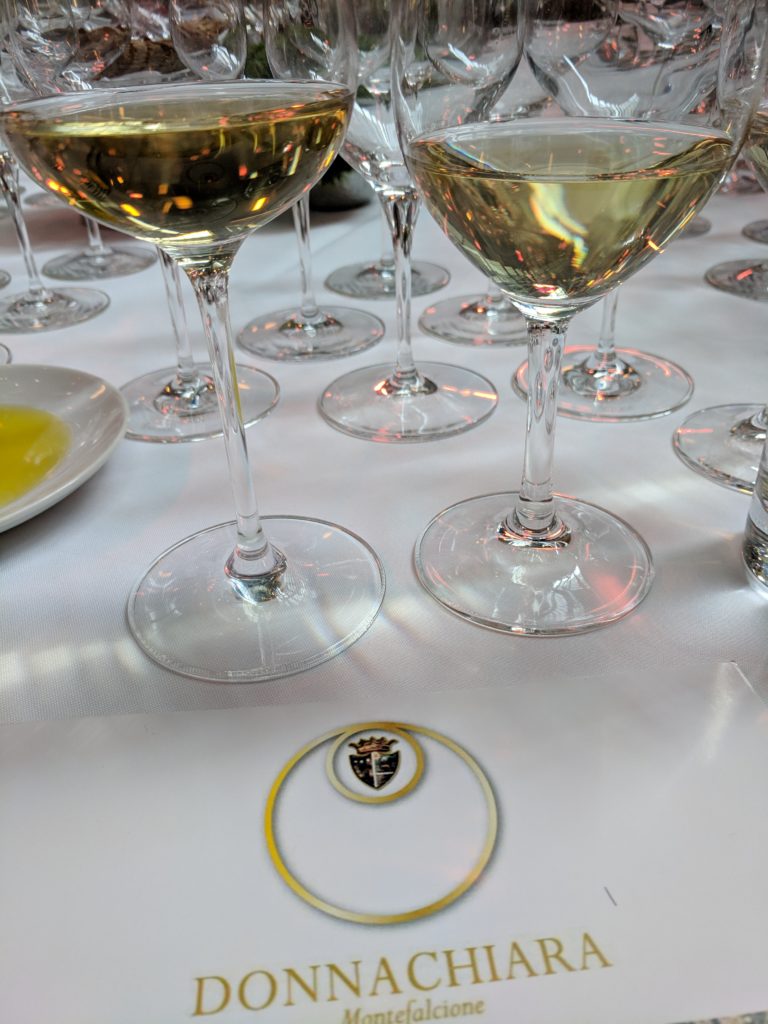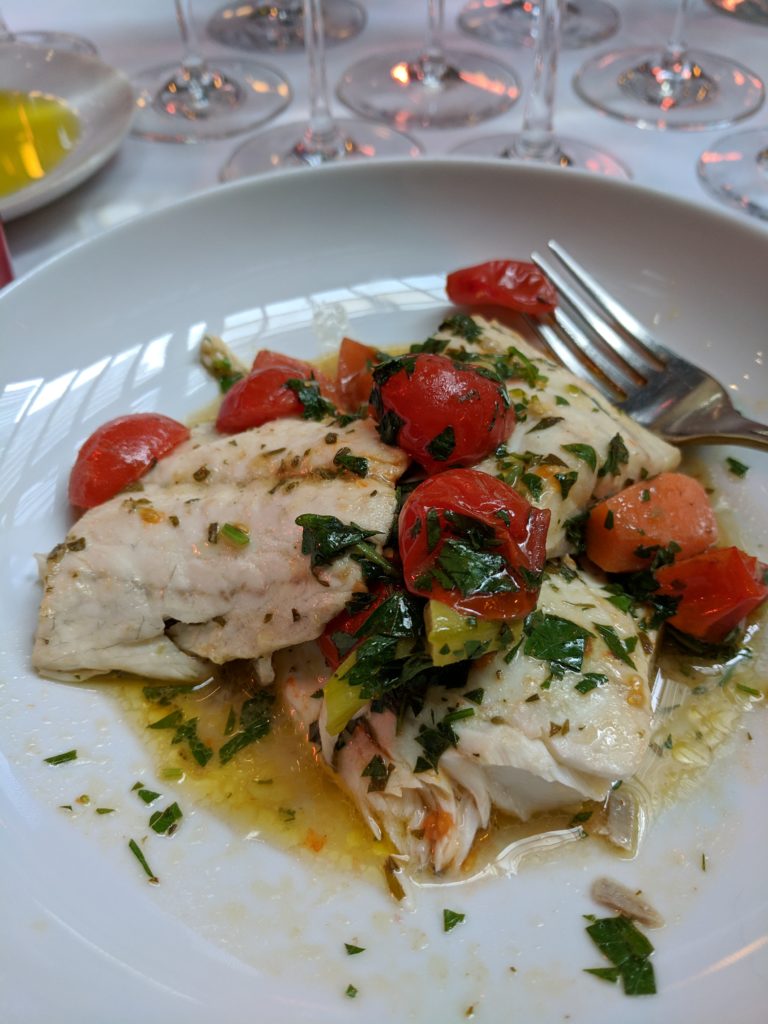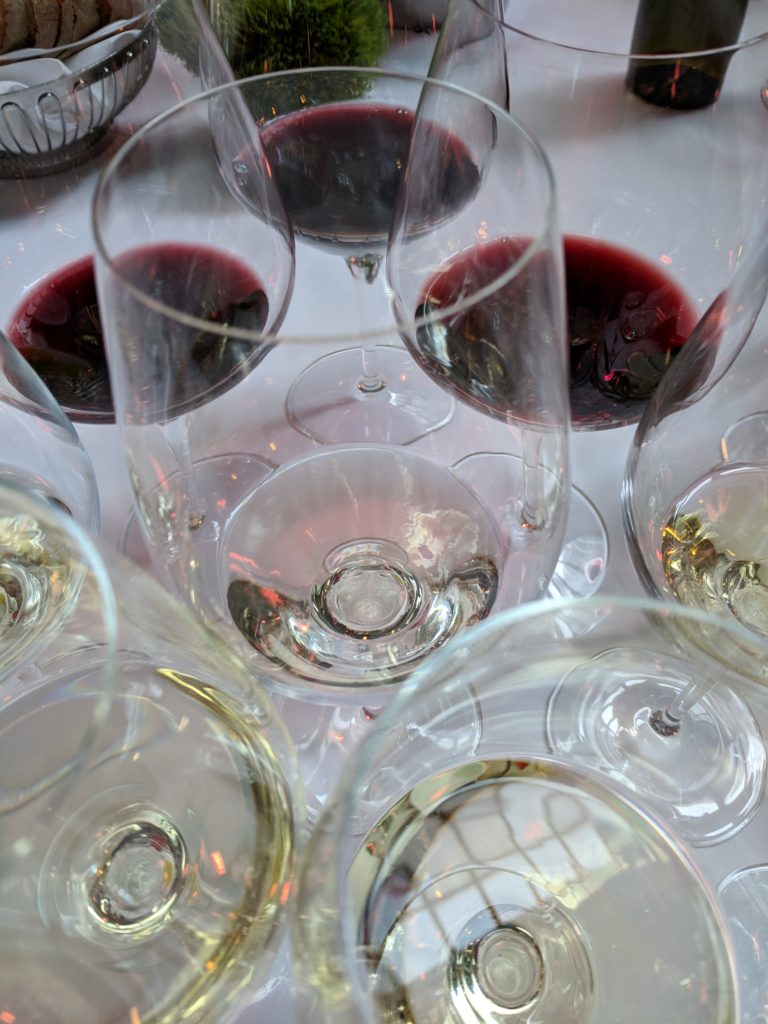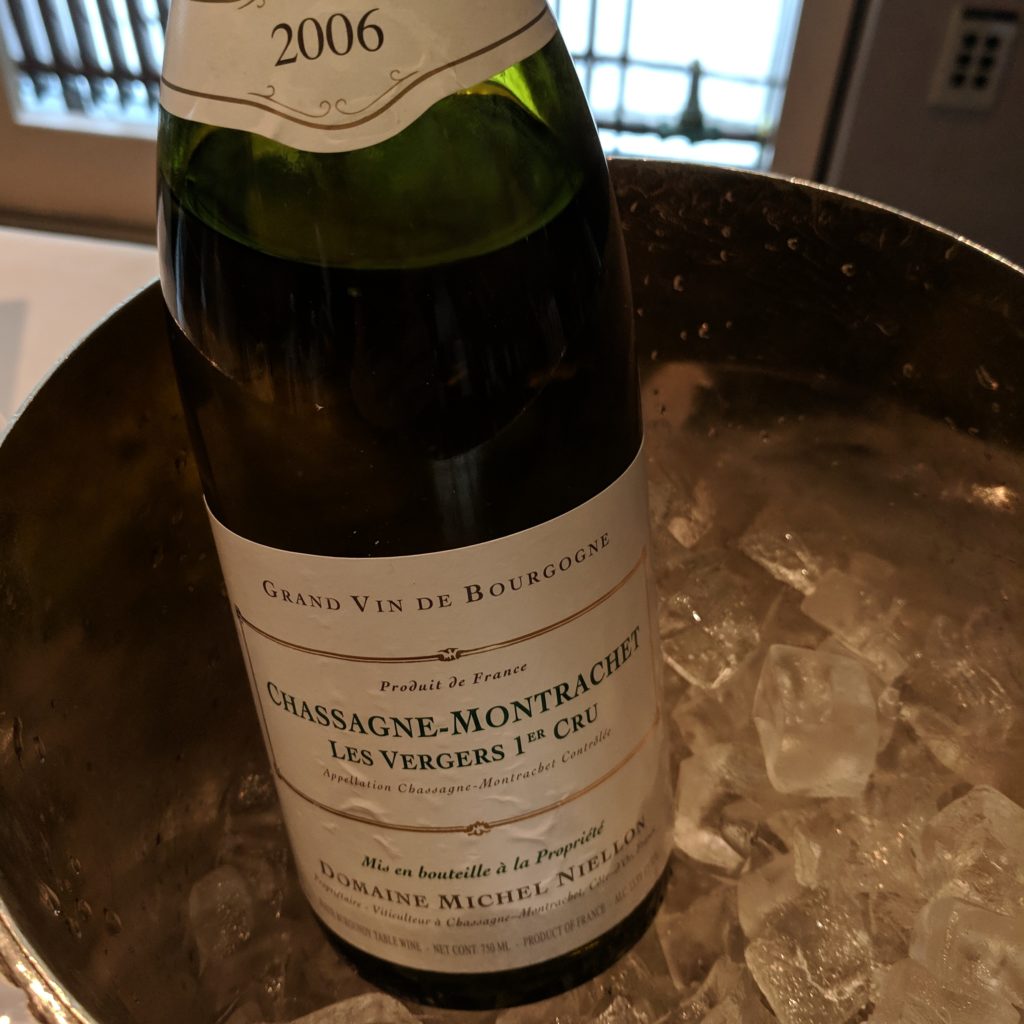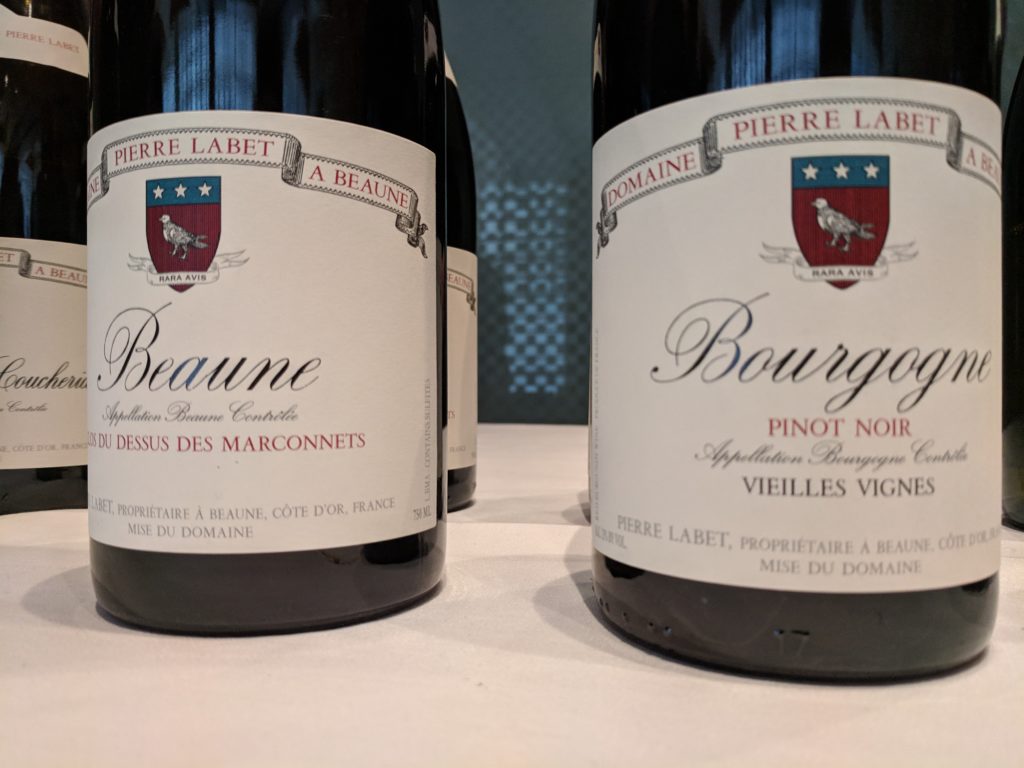Looking for a perfect pair of wines to take along to your next picnic? Look no further than Domaine Bouquet’s Sauvignon Blanc and Rose wines from the latest vintage. This Argentine duo are made from organically grown grapes, in vineyards situated within the high altitudes of Mendoza’s Uco Valley. Produced by the Bousquet-Al Ameri family, the winery has made wines for the past 15 years.
First established by Jean Bousquet, Anne Bousquet took over in 2011, joined by her husband Labid Al Ameri. The husband and wife team brought in consulting winemaker Paul Hobbs to improve their viticultural practices in 2015 and are presently working on their newest planting project, which features Grenache and Cabernet Franc.
However, their overarching goal is simply stated by Anne, “We just want to make the finest wines possible and sell them at prices people can afford.” What more could you want?
Tasting Notes
Domaine Bousquet Sauvignon Blanc 2019, Tupungato Uco Valley, Mendoza, Argentina, $13.00
A pronounced nose of tropical fruit, citrus and pineapple, with a dry palate of fresh fruit and a slight herbal note. It is easy to drink (perhaps a bit, too easy? 😊), and very refreshing with long length.
Domaine Bousquet Rosé 2019, Tupungato Uco Valley, Mendoza, Argentina, $13.00
A blend of 45% Malbec, 45% Cabernet Sauvignon, 5% Sauvignon Blanc and 5% Pinot Gris, this rosé is pale salmon in color. It is dry on the palate, with ripe raspberries, cherries and a hint of herbs, with medium acidity, medium body and long length.
Category Archives: The Wine World
Getting schooled on L’Ecole 41’s top terroirs and the Walla Walla Valley
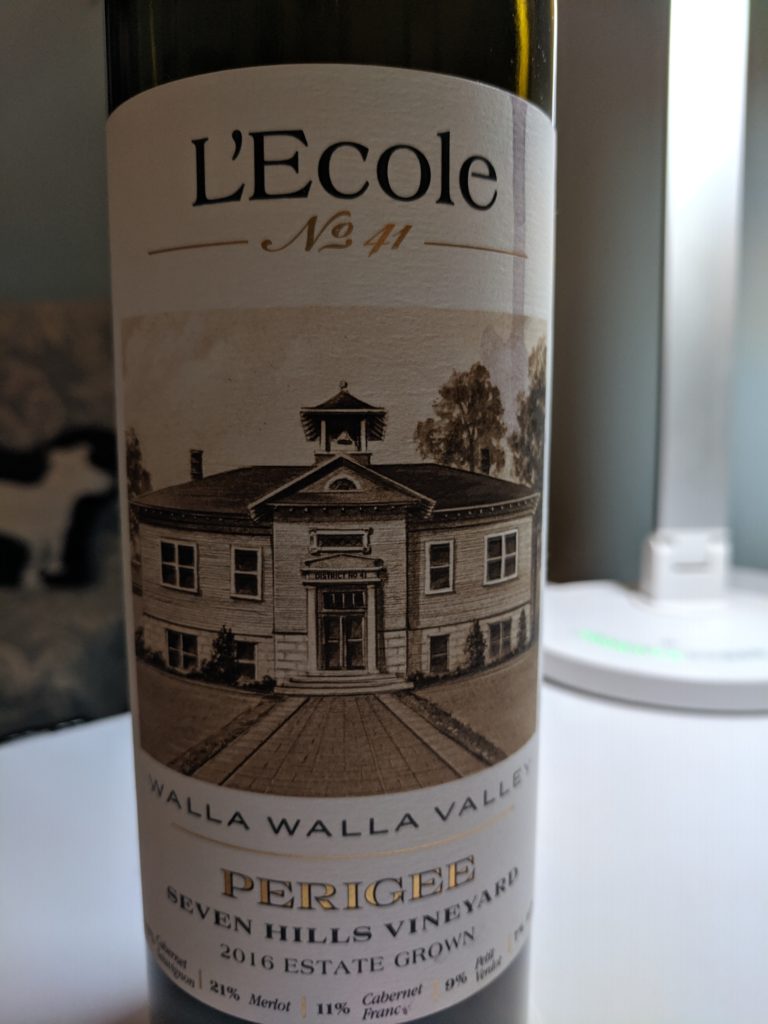
Ensconced in an old schoolhouse from which it takes its name, L’Ecole 41 was Walla Walla’s third winery and is at the epicenter of Washington wine. The family-owned winery was established in 1983 by Jean and Baker Ferguson, two Walla Walla natives who started growing grapes and making wine as a retirement project. Five years later, their daughter, Megan, and son-in-law, Marty Club, came back to the valley to take over what had become a fledgling business. Today, the pioneering winery has become widely recognized for producing beautiful wines.
L’Ecole 41’s makes wines from the larger Columbia Valley, but its higher end wines, crafted from top vineyards in the triangular-shaped Walla Walla Valley, truly speak to the terroir of this region. Situated in the southeastern corner of Washington State, Walla Walla provides a high desert climate, with rainfall limited to the winter months. Thanks to the hot, dry conditions, red wines account for 95% of the local production. Yet, in spite of the daily heat, the elevation and large diurnal shift result in a bright, natural acidity that has become a hallmark of all Washington wines. And, the sandy soils mean that the vines don’t need to be grafted onto American rootstocks.
I first became aware of the wines of L’Ecole 41 when I tasted their Semillon at the Society of Wine Educators’ conference back in 2005. But, given the time that had passed and my lack of knowledge of their highly regarded reds, I was intrigued when I received an invitation to taste through several terroir-focused flights.
With 36 years of winemaking experience, L’Ecole 41 now takes a uniform approach to each vintage. Accordingly, they follow the same vineyard and winemaking practices from year to year, which permits the terroir to show through even more than if they were to adapt to each growing season.
Our first flight focused on the Seven Hills Vineyard, one of L’Ecole 41’s estate vineyards situated in the southern perimeter of the valley. The 128-acre vineyard is comprised of wind blown loess (talc) soils, with vines grown on the North-facing slope due to the high heat. Jointly owned with several other wineries, it is planted to Bordeaux varieties and Syrah. This initial introduction featured Merlot, Cabernet Franc and Cabernet Sauvignon, all from the cool, 2008 vintage.
We next turned our attention to Perigee, a Cab-driven, Bordeaux blend, also sourced from the Seven Hills Vineyard. We tasted through three different vintages varying from the cool 2006 and the even cooler 2011 to the warm 2016. Despite vintage variation, all of these wines displayed a meatiness, along with dried herbs and robust concentration. Not surprisingly, 2006 showed some development with more tertiary aromas and flavors while the 2011 was the most tart and the 2016 offered up riper fruit notes.
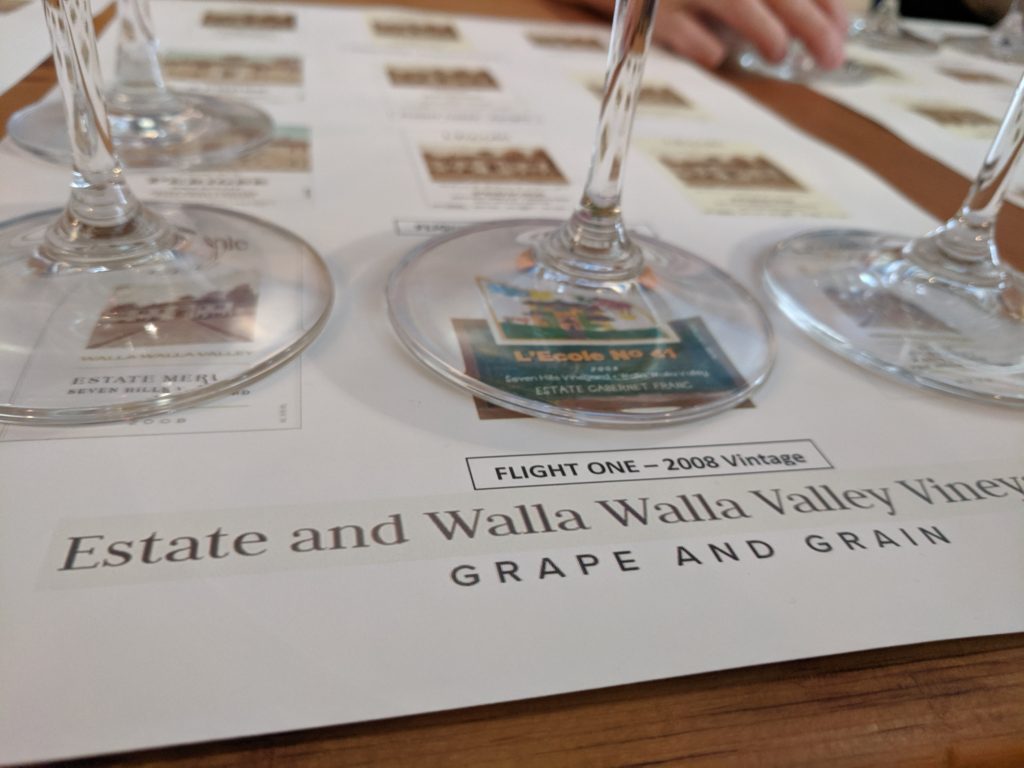
The third flight featured Apogee, a single vineyard, Bordeax-blend wine, produced from grapes from the Pepper Bridge Vineyard. L’Ecole 41 was the first winery to make wine from this vineyard, which is on the floor of the valley, on the alluvial flood silts from the previous ice age. Since the 2011 vintage was too cool to produce this wine, we tasted the 2006, 2010 and 2016 vintages.
Last, but not least, we tasted through wines from the Estate-based Ferguson Vineyard. Found at the top of the crest, at 1400 feet in elevation, Ferguson is home to one of the most volcanic soils in Washington. The vineyard’s 18 inches of wind-blown loess sit on top of a two-mile- deep layer of fractured basalt, remaining from ancient lava flows. With its super windy and super sunny conditions, the 42-acre vineyard was planted in 2008-09 to Bordeaux varieties. In addition to producing Ferguson, the vineyard is also occasionally used to make a pure varietal wine.
We tasted Ferguson 2011 (its first vintage) as well as the Ferguson 2016, as well as a very powerful Cabernet Sauvignon 2014 from this vineyard. The latter was very structured, with firm tannins, dark, black fruit and bright acidity, while the more youthful Ferguson was even fresher, with more red notes; neither was overly dense or extracted, nor was the limited production (300 cases) Cabernet Sauvignon.
At price points ranging from $37 for the Estate Merlot wines to $65 for the Estate Ferguson, these are definitely premium wines. However, they over-deliver in terms of their quality and provide excellent value for such age-worthy, well-made wines that will delight your palate.
Ferzo sets sail with new wines in the U.S. market
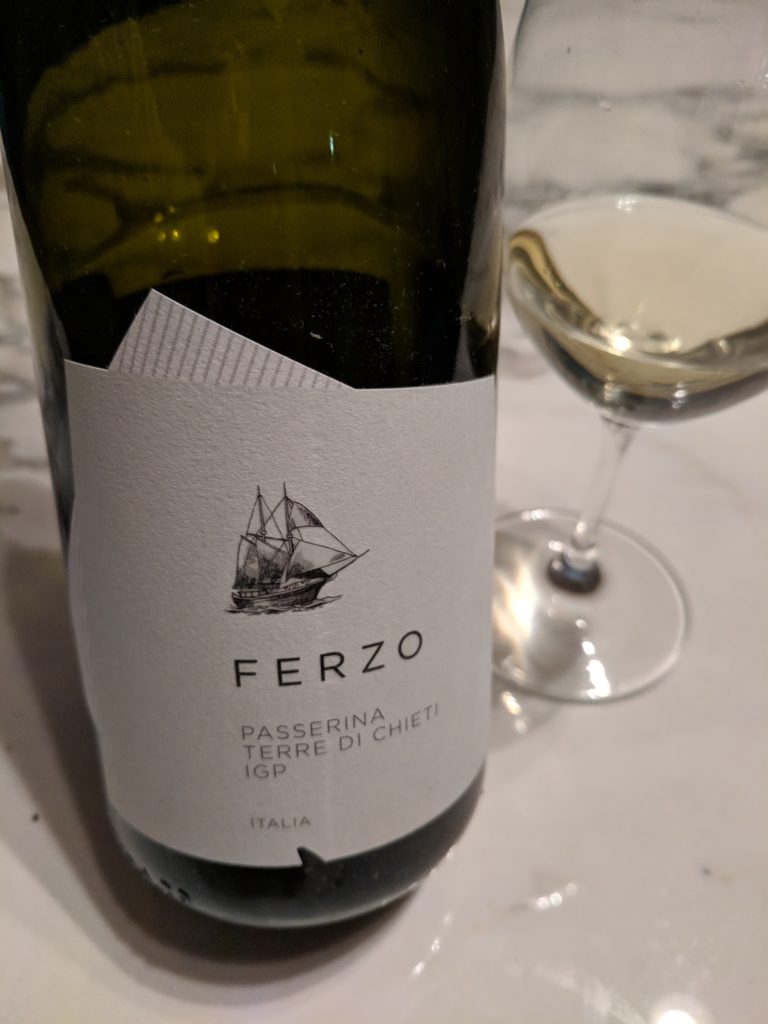
Co-ops often get a bad rap, but good producers are good producers whether they are a private company or a group of local growers banding together. In this case, Codice Citra wines are made from the estate-grown fruit from a collaboration of family-owned vineyards within the Chieti province of Italy’s Abruzzo region. With some families owning just two acres, it makes more sense to pool resources for costly expenses such as fermentation tanks and other winery equipment.
The cooperative was founded in 1973 and focuses on local grapes such as the well-known Montepulciano d’Abruzzo and Trebbiano d’Abruzzo to more esoteric varieties. The Codice Citra portfolio includes four ranges of wines (Citra, Caroso, Las Vitae and Ferzo), the latter of which is now making its debut into the U.S. market.
Specifically, the Ferzo name refers to “patches of fabric stitched together to create a sail,” and symbolizes the piecing together of numerous plots of vineyards, within the southern part of the Abruzzo region.
Among the Ferzo line, there are three whites produced from indigenous varieties, namely: Pecorino, Cococcioloa and Passerina. These three wines are all fermented in stainless steel, ensuring that the wines are fresh and fruit forward without any oak influence. A rosato (aka rose) and a Montepulciano d’Abuzzo round out the range.
Most recently, with its emphasis on Abruzzo’s viticultural history and a strong commitment to high quality wine, Codice Citra has brought on winemaker, Ricardo Cotarella as executive enologist and partnered with Leonardo LoCascio Selections, as its exclusive U.S. importer.
Ferzo Passerina 2017, Terre di Chieti IGT, Abruzzo, Italy, $26.00
The ancient variety of Passerina is not well known, but is on the path to rediscovery, given recent interest in the grape in Abuzzo, Umbria and Le Marche (where it is produced within the Offida DOCG). This wine has a beautiful floral and fruity nose, with flavors of white flowers, juicy pineapple, pear and tropical fruit. On the palate, it offers up bright acidity, medium body and long length.
Ferzo Pecorino 2017, Terre di Chieti IGT, Abruzzo, Italy, $26.00
Almonds, minerality and hint of pear greet the nose. On the palate, this wine is dry, with medium+ acidity, medium+ body and is quite angular. Flavors of nuts and minerals dominate, giving the wine weight and depth, before culminating in long length.
Ferzo Cococciola 2017, Terre di Chieti IGT, Abruzzo, Italy, $26.00
The Cococciola grape is cultivated in both Abruzzo and Puglia and is frequently compared to Sauvignon Blanc. This wine offered up more fruit character than the Pecorino, with more pronounced pear and citrus, a hint of waxiness on the palate and just a slight note of nuttiness. It displays nice body, good depth and long length.
Ramon Bilbao reinvents Rioja, yet stays true to tradition
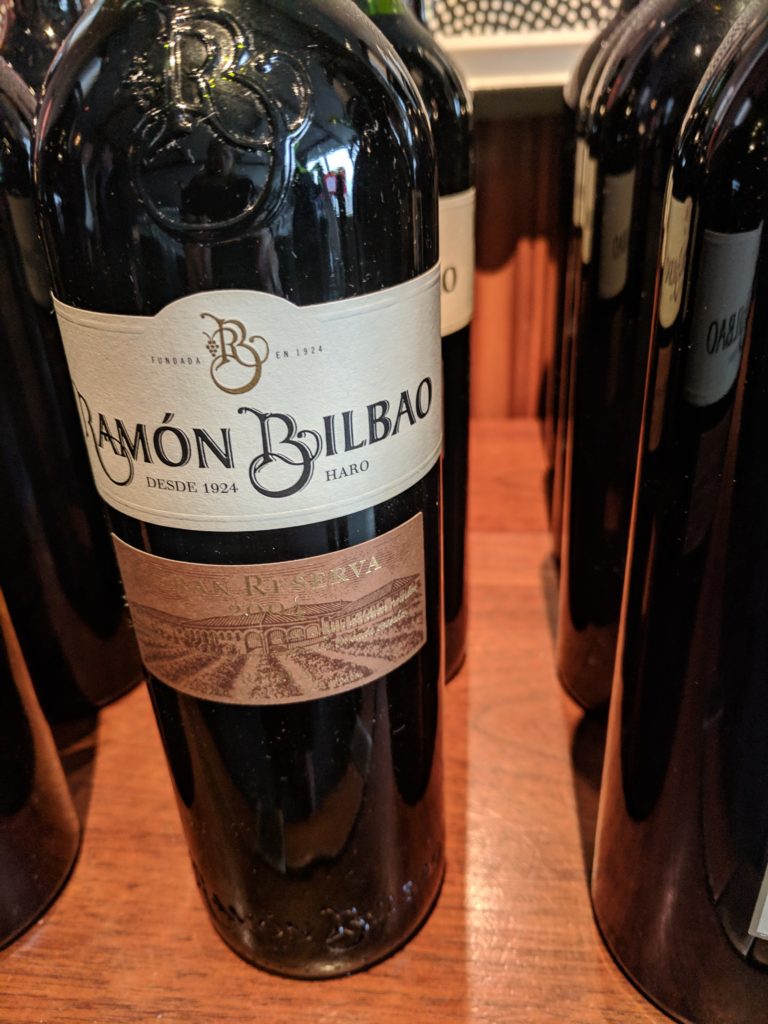
The familiar adage is “If it ain’t broke, don’t fix it,” but when the Zamora family purchased the Ramon Bilbao company in 1999, they had other plans. Admittedly, they didn’t break what was working, but they did choose to expand the way that the company thought about its Riojas.
Originally founded by the Bilbao family, the Ramon Bilbao winery has been making wine in the heart of Rioja, since 1924. Situated in Haro, within the Rioja Alta subzone, the estate’s 180 hectares of vineyards are influenced by both the Cantabrian Mountains and an Atlantic Ocean climate influence, bringing fresh, dry winds and keeping humidity at bay. Here, sandy, yellow-colored soils are favored for their high calcareous content, which is good for retaining acidity in Tempranillo, the key variety in Rioja. And, thanks to careful manual harvesting, vines are able to live a long time, with 50-90-year-old Tempranillo vines being a common occurrence.
Upon making its purchase, Zamora brought in a new winemaker, Rodolfo Bastida, a locally born and bred Spaniard who had been making wine elsewhere before landing at Ramon Bilbao. Among his first tasks in his new role was to make a Rioja that was a radical departure from tradition. Specifically, Bastida crafted a Rioja that was aged, not in traditional American oak, but rather, in French oak.
The thought process was to create a more modern, yet still true to its heritage, wine. Thus, Mirto was born! Named for a local bush that grows wild in the area, when the Mirto bush looks healthy, it indicates that the vintage will be a good one. Not surprisingly, Mirto (the wine) is only made in great vintages (in other words, when its namesake looks especially healthy!). Produced since 1999, the Mirto style has been a more structured wine, which is both fresh and elegant, driven more by fruit than oak influence.
Of course, as noted, there was no reason to completely abandon the tried and true traditional Rioja, so Bastida continues to produce a Gran Reserva Rioja under the Ramon Bilbao brand name, which follows a more traditional production. In this regard, the Ramon Bilbao wine is aged for a longer period of time (36 months) in American oak. Meanwhile, the Mirto generally spends only 24 months in French oak, utilizing a combination of barrels from different coopers. Bastida admits that it is a fun process to create two separate styles of Rioja.
Among the other changes that Zamora has made has been a new-found focus on altitude and one on terroir. Specifically, in 2012 they turned their attention to exploring altitude and new vineyard areas to combat climate change. In this regard, their vineyards are located at 600 to 700 meters above sea level, which might not be excessively high, but compared to other areas in Spain, it is. Then, in 2014, the winery became more terroir driven as they sought out better parcels, which is a departure for a wine that is traditionally a blend of areas.
During a special tasting for press and trade, participants had the opportunity to compare and contrast the traditional Ramon Bilbao Gran Reserva with the more modern Mirto. It was an exciting and illuminating experience to explore these two different styles of wine, both of which reflect the true nature of Rioja wine.
TASTING NOTES
Vina Turzaballa* Gran Reserva 1999
Produced from 100% Tempranillo and aged for 40 months in American oak, this is a typically classic, aged Rioja. It showed some bricking in the glass and some development on the nose, with notes of dried floral and dried fruit. On the palate, it was dry, with high acidity, nice evolution, faded fruit on palate, culminating in long length. It was my favorite wine of the tasting.
*This wine is no longer produced and has been replaced with the Ramon Bilbao Gran Reserva
Mirto 1999
Also made from 100% Tempranillo, but aged for only 24 months in French oak, in comparison, this wine was almost youthful. There was much less evidence of age in both its color and on the nose. Aromas and flavors of strawberry and plum dominated the nicely structured palate, which offered up good acidity and long length.
Ramon Bilbao Gran Reserva 2004
A blend of 90% Tempranillo, 7% Mazuelo and 3% Graciano, this wine was aged for 36 months in American oak. It displayed aromas of strawberry, vanilla, oak, slight floral, which persisted on the dry palate. Medium+ acidity, medium body, flavors of spice and leather, with long length.
Mirto 2004
This 100% Tempranillo wine spent 24 months in French oak. It was brighter with fresher, yet darker (more black than red) fruit, showing some complexity and, in general, a more structured palate. It was my favorite of the Mirtos.
Ramon Bilbao Gran Reserva 2011
Bringing together 90% Tempranillo, 65 Graciano and 4% Mazuelo, this wine spent 26 months in American oak. It had a pronounced nose of strawberry and cherry aromas. The dry palate was dominated by nice spice notes and firm tannins, and long length.
Mirto 2014
Made from 100% Tempranillo and aged for 19 months in French oak, this wine offered up very firm tannins and needs time to age. Dry, with bright acidity, angular, cherry, black cherry, long length.
These latter two wines need time to develop in bottle and soften their tannins.
Oregon’s OG Wines
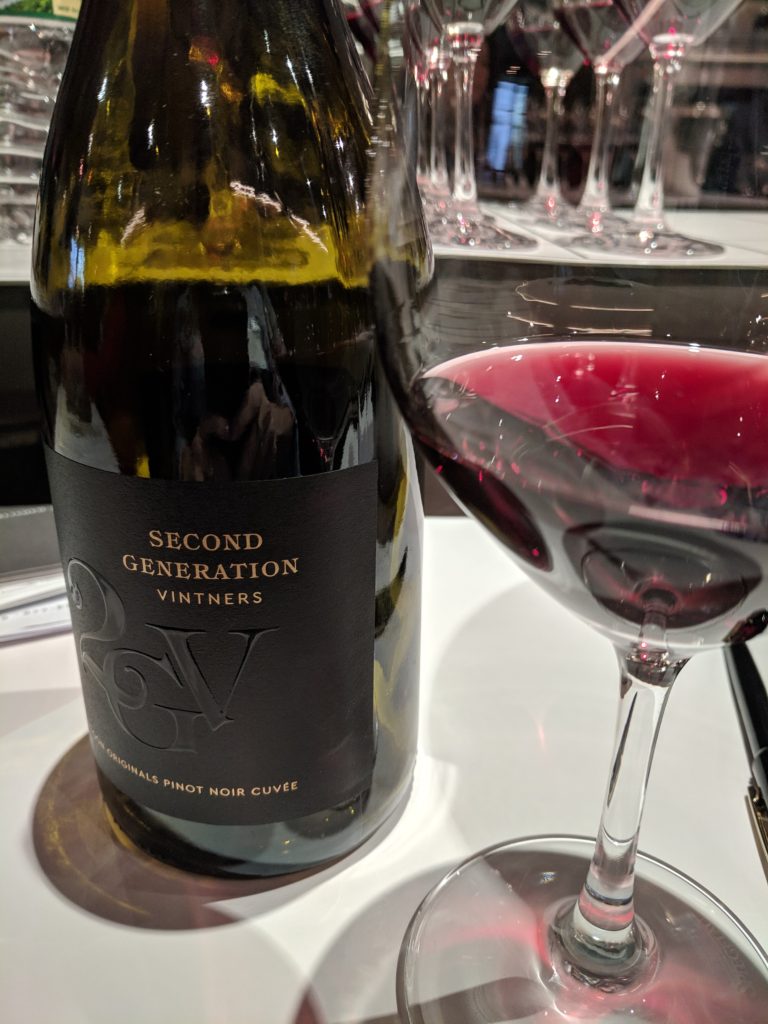
Sure, Oregon wines are fashionable now, but back in the 1970s, no one was planting grapes in the Willamette Valley. The area was filled with peach trees, walnuts and blackberries, as many of the vineyard block names at Sokol Blosser can attest. But, in the early part of that decade, three brave families ventured into the region with the deep conviction that this was a very special place in which to make great wine.
These self-dubbed “Oregon Originals” – the Ponzi, Campbell and Sokol Blosser families – arrived relatively concurrently in a variety of vehicles ready to hit the ground running, with their kids: Luisa, Anna Maria, Adam (and his siblings), Alex and Allison in tow.
As pioneers clearing the land and putting their faith in Pinot Noir, the three families would get together on a regular basis, sharing ideas and finding community with one another. Similarly, the children grew up as friends and remain so to this day.
Back then, it was not chichi for your family to own a vineyard and the kids were often ridiculed by their peers and their parents called drunkards. Today, these “kids” are all grown up and have taken over the leadership of their family’s wineries, representing the second generation of Oregon wine producers. Their wineries remain committed to Pinot Noir and are still family owned.
Similarly, they are all equally committed to being stewards of the land and the community and feel that it is important to work together. With this overarching philosophy, the three wineries, led by winemakers Luisa Ponzi (Ponzi VIneyards), Adam Campbell (Elk Cove) and Alex Sokol Blosser (Sokol Blosser), recently came together to collaborate on a special cuvée. Each winery contributed fruit from a single block of Pinot Noir, with each winemaker ultimately making three separate wines from the three different parcels of fruit. These nine wines then served as the components for the final blend.
Members of the press and trade were invited to a special seminar to taste through these components in a true demonstration of “land versus hand.” Interestingly, the overwhelming consensus among the winemakers was that the best wines were those that had been produced using one’s own fruit, underscoring the importance of really understanding the grapes to create great wine. Not surprisingly, the finished wine, 2017 2GV Pinot Noir Cuvée, focused heavily on these three components.
As a limited production wine (350 cases), 2GV was crafted primarily as a charitable effort, but is available online for purchase by the bottle, from the Ponzi Vineyards website.
NB: Purchase does not entail being a member of Ponzi’s wine club, and as I understand it, provided an adult is on hand to sign for and accept receipt, Ponzi can ship direct to consumers anywhere within the U.S.
Donnachiara and the Resilience of Wine
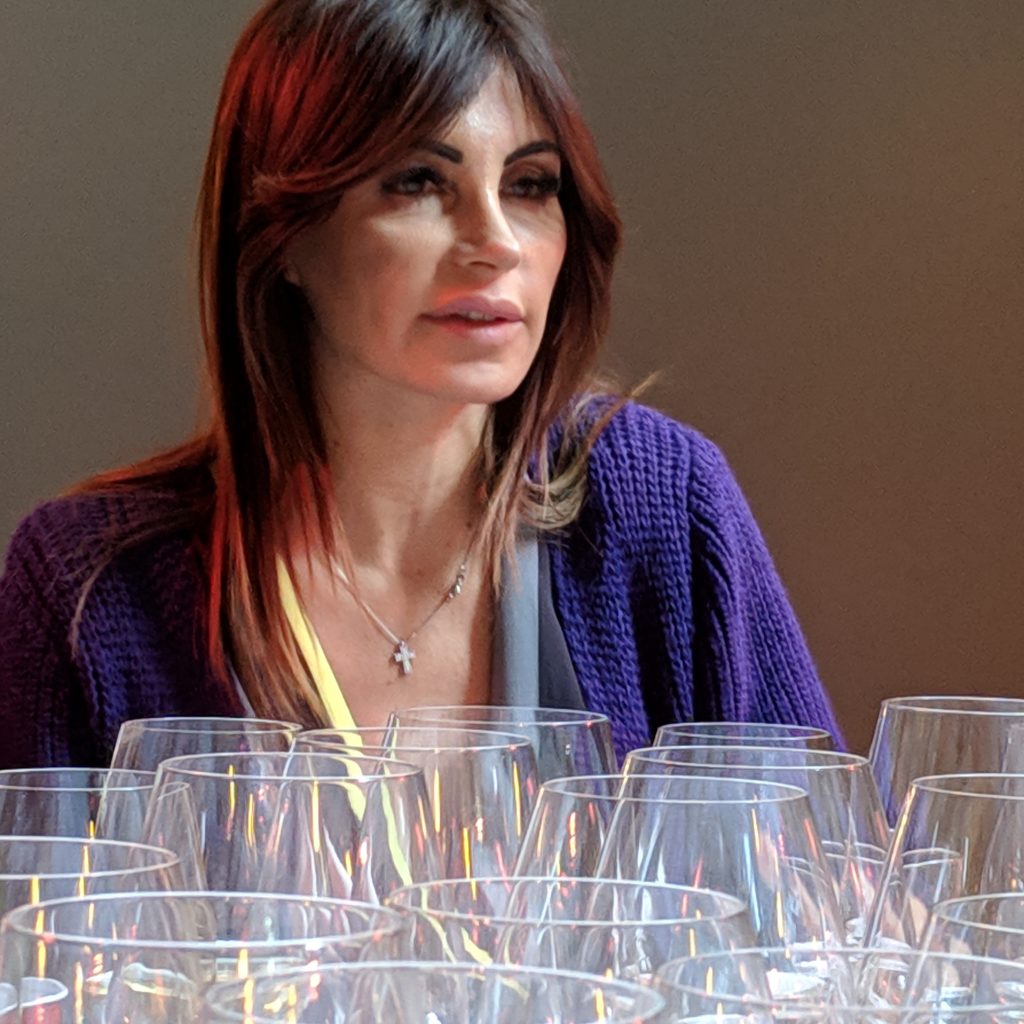
It is a challenge to grow grapes and make wine. Fortunately, the Campanian people are a resilient bunch. They have continually overcome volcanoes, earthquakes and economic hardship. In particular, the word resilience holds significant meaning for Ilaria Petitto, CEO of Donnachiara winery. She heard it numerous times growing up in connection with her family’s metalwork business (the resilience of steel). The term is also apt given the resilience of the local people and, more currently, she is applying it to the potential for Falanghina to become well known and well respected, as Grillo has now become in Sicily. Accordingly, her flagship Falanghina is called Resilienza.
Established in 2005 by Chiara Petitto (Ilara’s mother), Donnachiara was named for her aunt Chiara Mazzarelli Petitto, who instilled a love of the land in her and was the inspiration for starting her own winery in 2005. As the Petitto family has been in the region for more than 5 generations, cultivating vineyards and making wine, this was a natural progression for the family.
From the very beginning, Donnachiara has been focused on crafting high quality wines from local grapes, which is apropos of a winery situated in Campania on Italy’s Southwestern coast. Despite perhaps being better known for the Amalfi Coast, Neapolitan pizza and Pompeii, Campania stands out as having the most indigenous (local) grape varieties of all of Italy’s wine regions. Grapes such as Fiano, Greco and Aglianico are not only cultivated, but celebrated, taking center stage in the region’s highest denominations.
For Ilaria, it is Falanghina that she wishes to next elevate and believes that the vines grown in Benevento provide the best expression of the grape. This white variety most frequently display citrus, floral and herbal notes, along with medium body and bright acidity, And, while less structured than the more vaunted Greco and Fiano, Ilaria, in collaboration with Donnachiara’s consultant winemaker, Riccardo Cotarella, is confident that it has the potential to create wines of distinction.
Regionally, the majority of vineyards are primarily situated along the interior border of Campania, where the elevation and distance from the coastline keep the climate cool and green. Accordingly, harvest takes place from October through November while winemakers wait for the grapes to reach full ripeness. And, within this area, there are three DOCGs: Fiano d’Avellino, Greco di Tufo and Taurasi that reflect the region’s top wines. It is here that the Donnachiara winery is located, with an average vineyard elevation of 600 meters above sea level.
Although a handful of larger wineries dominate the vinous landscape, most wineries in Campania are small. This preponderance of tiny ventures makes it challenging to find common ground and promote the region as a whole, but with her recent appointment to the Consorzio, Ilaria is hoping to change that in time. As a medium-sized winery (180,000 bottles annually), Donnachiara has some leverage to make its name in the market, but Ilaria recognizes that they will all be more successful if they can promote Campania as a single brand. Thankfully, she has the resilience to persevere!
TASTING NOTES
Falanghina 2017, Beneventano Falanghina IGT, Campania, Italy
Aromas of pear and lanolin; dry, rich and concentrated, with medium acidity, full body and long length.
Fiano 2017, Fiano di Avellino DOCG, Campania, Italy
Bright, fresh, with a slight nuttiness, lovely citrus and minerality, culminating in long length.
Empatia 2017, Fiano d’Avellino DOCG, Campania, Italy
This organically produced Fiano was very aromatic and extremely floral, with fresh acidity, stone fruit, wet stone and long length.
Alatheia 2017, Greco di Tufo DOCG, Campania, Italy
This was very structural, with citrus and almond notes, medium acidity and long length.
Greco Riserva 2017, Campania, Italy
Having spent more time aging before release, this Greco was more concentrated, with yeasty aromas and fuller body. The Greco di Tufo Riserva will soon be approved as an addition to the DOCG.
Resilienza 2016, Beneventano Falanghina IGT, Campania, Italy
Showing some development on both the nose and palate, this wine displays minerality, medium acidity, richness, lanolin, white flowers and apricot, with long length.
All of the Donnachiara Taurasi wines are produced in a very elegant style, with resolved tannins and ready to be enjoyed upon release, although they certainly have the potential to age.
Taurasi 2015, Taurasi DOCG, Campania, Italy
Hailing from the excellent 2015 vintage, this wine offers up floral and black cherry aromas with soft tannins, an earthy undercurrent and long length.
Taurasi 2013, Taurasi DOCG, Campania, Italy
The 2013 vintage was a more challenging one, with lots of rain. Yet despite the less than stellar conditions, the wine is lovely with ripe red fruit, good acidity and long length.
Taurasi Riserva 2012, Taurasi Riserva DOCG, Campania, Italy
Only made in select years, the Riserva spent 24 months aging in oak. It displayed darker fruit and a more overt oak influence on both the nose and palate. The vintage was great, but warmer than usual.
Terlato’s CRU Collection: A Circle of Burgundian Friends

Like many people in the wine industry, John Terlato, Vice Chairman of Terlato Wines, is passionate about Burgundy. When Terlato Wines initially purchased Sanford Winery and its vineyards in Santa Barbara, California in 2002, John was strongly advised to look to Burgundy for information and inspiration as they embarked on this new Chardonnay and Pinot Noir venture.
He took the advice to heart and traveled to Burgundy in search of great wine. Of course, he was not disappointed, but, equally important, he discovered great people. He returned to the U.S. not only with new knowledge that he was able to impart at Sanford, but also with a circle of new friends.
Over time, these friendships have continued to grow and blossom and it is from this collection of great people that John has now assembled a collection of world-class Burgundy wines, which he is importing under Terlato Wines’ CRU Selections division. The portfolio includes an impressive array of Who’s Who in Burgundy, but John stresses that he wants to work with friends, not all Burgundy producers.
And, such friendships have also resulted in joint projects such as the wine he recently made with Chateau de la Tour at Sanford Winery, bringing together California Pinot Noir, with Burgundian expertise. He enjoyed the project very much and admits that the experience will influence the way he does things going forward, since it is difficult to ignore what you have learned.
Among other things that John has gleaned from his Burgundian friends is the concept that vines can be classified as either introverts or extroverts and, by understanding which vines are which, one can best manage the vines to produce their highest quality. Accordingly, extroverted vines need more attention, while introverted vines should be left alone. He has since adopted this philosophy to other vines, which compliments his focus on making wines of place instead of wines of taste.
John himself is an extrovert, which comes across in his warm, generous approach to life and to people. But, he doesn’t want to interact just for the sake of interacting; in his words, “the ideal dinner party is made up of more than the [three] Graces and less than the [nine] Muses,” giving him the opportunity to have meaningful conversations with a variety of people over the course of a delicious meal and a glass of wine.
Terlato recently hosted a tasting of a subset of the Cru Selections portfolio, including: Domaine Michel Niellon, Chateau de la Tour, Domaine Pierre Label and Domaine Ramonet. It was truly an impressive tasting and an absolute treat to taste some of these very limited wines. And a welcome reminder as to why people are so passionate about Burgundy!
NB: If you would like to get to know John Terlato even better, why not join him on a cruise this December?
TASTING NOTES
Domaine Michel Niellon
This fourth-generation family affair is located in Chassagne-Montrachet and produces the full range of wines from the basic Bourgogne appellation to Grand Crus, including Chevalier-Montrachet. The vineyards are managed using sustainable agriculture.
*Chassagne-Montrachet Premier Cru “Les Champgains” 2016
Rich, lovely, apple, woody, full bodied, long length.
*Chassagne-Montrachet Premier Cru “Clos de la Maltroie” 2016
Mineral, wet stone, fresh, mineral, apple, toothpick, very long length.
*Chassagne-Montrachet Premier Cru “Les Vergers” 2006
Developing, rich, full body, mineral, caramel, waxy, peach, long length.
Chateau de la Tour
Established in 1889 and situated in Vougeot, Chateau de la Tour is presently the largest landowner of the Clos-Vougeot Grand Cru, with a holding of 15 acres. The vines are farmed organically and the wines are aged in custom barrels. The estate’s Clos-Vougeot wines are typically produced from vineyards that average 65 years old, while those under the Clos-Vougeot Vieilles Vignes (old vines) label are made from vines of a minimum of 100 years old.
*Chateau de la Tour Clos-Vougeot Vieilles Vignes 2015
Intense and concentrated fruit, cherry, herbs, earth, very long length.
*Chateau de la Tour Clos-Vougeot Vieilles Vignes 2007
Floral, red fruit, earthy and herbal, long length.
Domaine Pierre Labet
This domaine dates back to the 15th century with its headquarters built on the battlements surrounding the city of Beaune. The Labet family itself also has a long history in the region, having been in Beaune for 500 years. The family’s holdings include 25 acres spread throughout different appellations, with all of the vineyards farmed organically since 1992.
*Beaune “Clos du Dessus des Marconnets” 2015
Lovely nose, spice, apple, full body, medium acidity, good length.
*Meursault “Les Tillets” 2015
Mineral, green apple, toothpick, nuts, rich and round, long length.
*Beaune “Clos du Dessus des Marconnets” 2015
Ripe, rich, fresh, herbal, cherry, wood, long length.
*Gevry-Chambertin Vieilles Vignes 2015
Ripe berry, cherry, herbal, earthy, fruit on palate, bright acidity, woody finish, long length.
Domaine Ramonet
The Ramonet family settled in Burgundy in the 19th century and it was Pierre Ramonet, grandfather to the current owner, Jean-Claude, who established the (now vaunted) domaine in 1935. While Domaine Ramonet produces both red and white wines, it is most known for its top Chadonnays. Today, Jean-Claud is joined in the business by his daughters Anne-France and Clarisse.
*Bougogne Aligote 2016
Beautifully fresh, round, soft ripe pear/peach, pith, slight tropical, long length.
*Puligny-Montrachet 2016
Slight nuttiness, apple, wood, nuts, rich and round, slight buttery note, long length.
*Chassagne-Montrachet Premier Cru “Boudriotte” 2016
Woody and apple on the nose, fresh, elegant and rich on the palate with apple, woodiness lingers in finish, long length.
*Chassagne-Montrachet “Les Ruchottes” 2014
Green apple, hint of oak, fresh acidity, full body, VERY long length.
*Bienvenue Batard-Montrachet 2001
Caramel, apple custard, good acidity, full body, caramel, butter, very long length.
Wow!
Colome’s winemaker is living the impossible dream
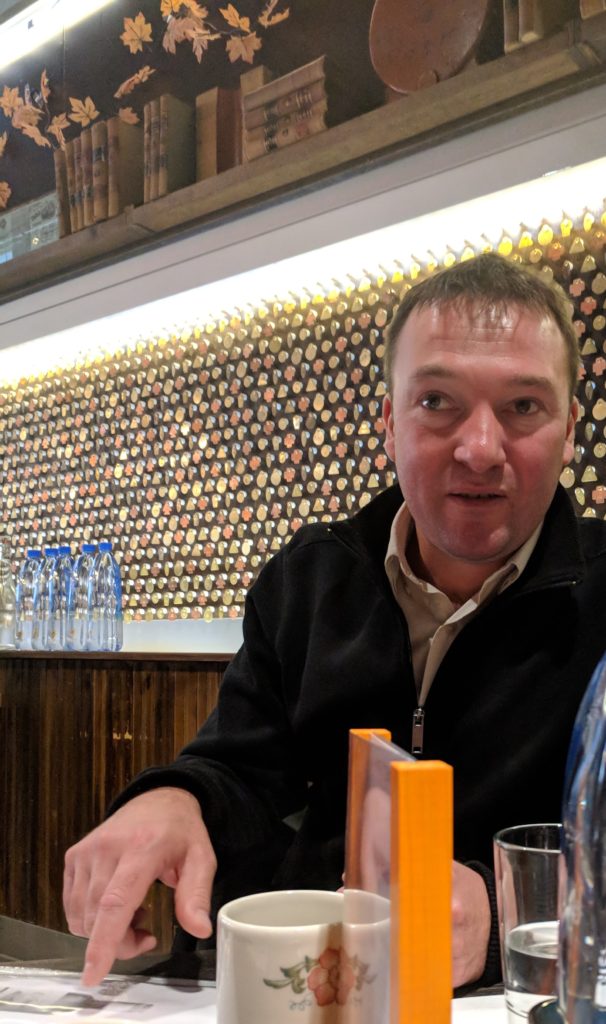 Born, raised and educated in Burgundy, Thibaut Delmotte launched his wine career doing three harvests each in Burgundy and Bordeaux before taking a year off to travel throughout South America. He booked an open ticket, headed to Buenos Aires and visited Argentina, Chile and Brazil, eventually finding himself somewhat settled in Salta teaching French at the local Alliance Française.
Born, raised and educated in Burgundy, Thibaut Delmotte launched his wine career doing three harvests each in Burgundy and Bordeaux before taking a year off to travel throughout South America. He booked an open ticket, headed to Buenos Aires and visited Argentina, Chile and Brazil, eventually finding himself somewhat settled in Salta teaching French at the local Alliance Française.
When a new acquaintance discovered his background as a winemaker she told him about a high elevation vineyard north of the city. He didn’t believe it was possible to grow vines at such an altitude but was intrigued enough to secure an appointment with the man behind the project: Donald Hess.
Thibaut and Donald arranged to meet at the property at 9:00 AM, which required Thibault to depart Salta at 5:00 AM. By 6:00 AM, the pavement gave way to gravel as he snaked his way up the mountain. By 9:00 AM, there was no sign of life and he was beginning to think that he had been punked. Soon he came to a small village and was assured that he was close to his destination. Another 40 minutes of driving brought him face to face with the tall, Swiss gentleman who promptly laughed at seeing the small, compact rental car in which Thibault had made the journey.
Still disbelieving, Thibaut permitted Donald to give him a tour of the mountainous property, which was barren desert – more suited to cacti than Cabernet. Then, he saw the eight hectares of pre-phylloxera vines and was duly impressed.
Hess spoke about his grand plans for multiple vineyards and a large capacity winery. Thibaut was excited about the opportunity, but readily admitted to his lack of experience to take on such a project. Undeterred, Donald continued with the tour and invited Thibaut to lunch that afternoon. But, before the meal, he was to take part in a blind tasting during which he was asked to taste and rank 10 wines in order of his preference. It was the ultimate job interview! When Thibaut’s least favorite wine was revealed to be the Colome Malbec Reserva he was certain he had blown his chance, but Donald appreciated his feedback as to why the French-born and bred winemaker didn’t find the overt/powerful wine to his liking. Hess offered him the job on the condition that he commit to the post for at least three years. That was fifteen years ago.
In the early years, the emphasis was on building the new winery, developing the vineyards and, equally important, investing in the local village to upgrade its infrastructure, increase its access to education and solve social ills such as alcoholism and teen pregnancy. It was also necessary to create own electricity
Despite its initial rusticity, the Colome property itself dates to 1831, when it was established by the Isasmendi-Dávalos family. It remained in the Dávalos family until 2001, when Hess was finally able to purchase the property. Hess himself was first acquainted with Colome and its potential while visiting his great aunt in Buenos Aires several years prior and had the opportunity to taste an old bottle of its wine.
In addition to the state-of-the-art winery, Colome’s estate is home to the James Turrell Museum. Turrell is a California-based, light and space artist, whose experiential installations defy explanation. To get a better sense of his art, please see: http://www.bodegacolome.com/museo/?lang=en The winery attracts 8,000 visitors each year who usually spend half a day tasting wine and visiting the museum. A nine-room hotel is also available on the estate for those who wish to stay over.
More recently, the focus has been on two special projects: Autentico and Altura Maxima (maximum height). The Autentico project relies on doing things the “old way.” In this regard, the best blocks of 100 year+ vines are still trained using the pergola system, watered with flood (instead of drip) irrigation, treated without chemicals and generally approached with a low intervention philosophy. This approach continues in the winery, where the use of oak is eschewed in favor of showing the true (authentic) wine in the glass, uncovered by wood aromas and flavors.
At a height of 3,111 meters (10,200 feet) in altitude, Altura Maxima is the highest vineyard in the world (although a recently planted plot in Tibet threatens to take this title away). It was initially planted in 2007 to Pinot Noir and Sauvignon Blanc, as well as Malbec. Given the elevation, the vines receive more ultraviolet light, forcing them to develop thicker skins on the grapes. This ultimately produces wines with more structure and concentration, while the 25 degree diurnal difference ensures that the wines retain high levels of acidity and elegance. All of this comes at a price; the very extreme conditions mean that wasps, donkeys and frost are all threats to the fruit. Thus, the vineyard only yields a small production of grapes (4 kilos per hectare compared to 7 kilos per hectare).
TASTING NOTES
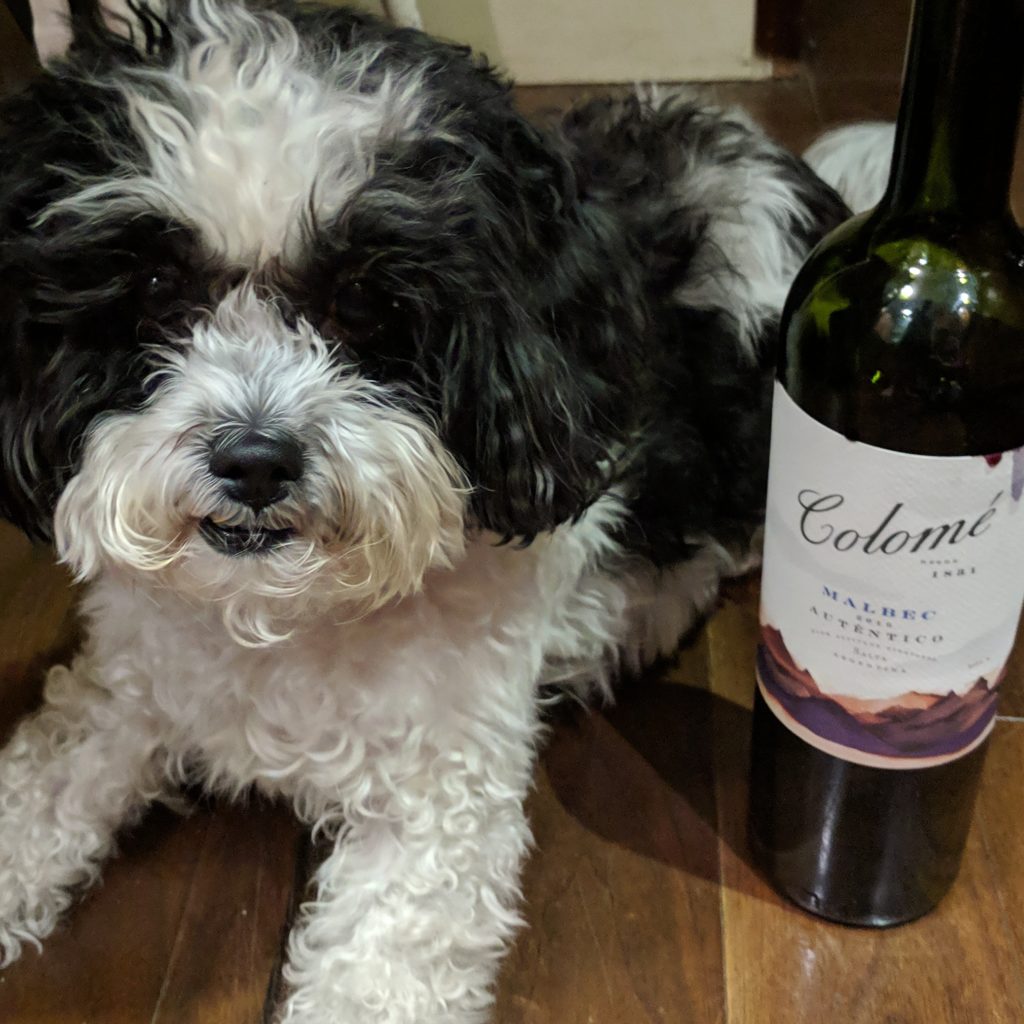 Colome Autentico 2017, Salta, Argentina, $on-premise only
Colome Autentico 2017, Salta, Argentina, $on-premise only
This 100% Malbec is deep purple in color with intense aromas of wood, plum, black fruit. The dry palate displays very ripe blackberry and blueberry joined by floral and spice, with firm, ripe tannins, full body and medium+ length. It is released young, but can age five to seven years.
Colome Altura Maxima 2014, Salta, Argentina, $125.00
Also 100% Malbec, this wine spends 23 months in old oak and one year in bottle before release. It is a very floral Malbec with fine grained tannins.
All I Want for Christmas: Marta Scarampi dresses
Regardless of which winter holidays you do or don’t celebrate, who doesn’t want to be on the receiving end of presents? So, with that in mind, I am starting a list just in case anyone wants to know what to get me. Next up, a fabulous dress from Marta Scarampi!
 Thanks to a holiday invite from my friend Susannah Gold of Vigneto Communications, I had the pleasure of meeting the Torino-based designer and browsing her wares while sipping wines from Lugana, a unique DOC that spans two Italian regions – Lombardia and the Veneto. Here, the white grape variety Turbiana, which is closely related to Trebbiano di
Thanks to a holiday invite from my friend Susannah Gold of Vigneto Communications, I had the pleasure of meeting the Torino-based designer and browsing her wares while sipping wines from Lugana, a unique DOC that spans two Italian regions – Lombardia and the Veneto. Here, the white grape variety Turbiana, which is closely related to Trebbiano di  Soave, reigns supreme, finding its way into a wide range of wine styles from still to sparkling and from dry to sweet. [NB: I previously wrote about Lugana’s wines last year.]
Soave, reigns supreme, finding its way into a wide range of wine styles from still to sparkling and from dry to sweet. [NB: I previously wrote about Lugana’s wines last year.]
 Italian native Marta Scarampi studied at FIT before returning home to launch her fashion line. Her line features a selection of capes and her travel and business collection – dresses and jackets that easily go from the boardroom to the boarding queue.
Italian native Marta Scarampi studied at FIT before returning home to launch her fashion line. Her line features a selection of capes and her travel and business collection – dresses and jackets that easily go from the boardroom to the boarding queue.
 These capes are much better to keep a super woman warm on a cold day and can be customized with faux fur collars, rainproof hoods and are available in a range of fabrics and styles. They looked uber chic and sophisticated on my friend, Lisa, who tried on several different options.
These capes are much better to keep a super woman warm on a cold day and can be customized with faux fur collars, rainproof hoods and are available in a range of fabrics and styles. They looked uber chic and sophisticated on my friend, Lisa, who tried on several different options.
Always and forever the dress girl, I was smitten by two styles in Marta’s collection. The first was her Lucca stretch dress (pictured left), while the other was a more celebratory number with metallic threads, worthy of the holiday season. Like the capes, the dress styles can also be made-to-order with the client’s preferred fabric choice.
You Can Go Home Again: A Visit to Macari Vineyards
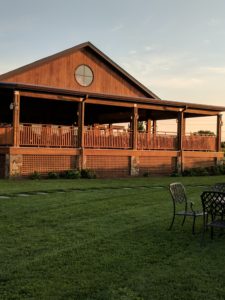 They say you can’t go home again, but our visits to the North Fork of Long Island, post-real estate sale, continue to make us feel welcome. And nowhere was that more apparent than at our former next door neighbor, Macari Vineyards.
They say you can’t go home again, but our visits to the North Fork of Long Island, post-real estate sale, continue to make us feel welcome. And nowhere was that more apparent than at our former next door neighbor, Macari Vineyards.
Living next door to a winery is great! As I liked to joke when we visited the tasting room with house guests – it was stagger distance. But, all kidding aside, they truly were great neighbors. From the very beginning, the Macari’s were helpful, kind, warm and generous. While most people consider borrowing a cup of sugar from their neighbors in a pinch, we borrowed their winemaking expertise in the form of a chemical analysis of the wine that my husband made with two friends from Macari fruit. Plus, they produce amazing wine, currently under the direction of winemaker Kelly Urbanik Koch.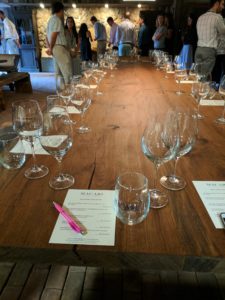
So, when my husband’s employer decided to do an event on the North Fork, we knew that Macari would figure prominently on the agenda. Upon arrival, the assembled guests (a group of employees, management and advisory board members) were provided with a tour of the winery, followed by a guided tasting with Alexandra Macari in their beautiful, Private Barrel Cellar. Afterward, we enjoyed dinner on the deck, accompanied by an assortment of Macari wines.
All in all, it was a wonderful visit and we definitely felt at home!
TASTING NOTES
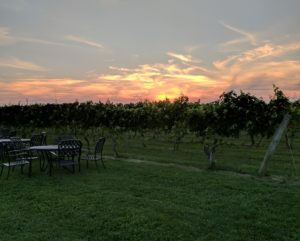 Macari Sparkling Pinot Noir Gabriella 2012, $35.00
Macari Sparkling Pinot Noir Gabriella 2012, $35.00
Named in honor of Alexandra and Joe’s daughter – and an integral part of the Macari team – Gabriela, this effervescent wine offered up aromas of cotton candy, cherries and yeastiness. On the palate, it is dry with medium+ acidity, ripe berries, cream and melon.
Macari Sparkling Cabernet Sauvignon “Horses” (2015 or 2016), $N/A
Unfiltered and cloudy wine due to the minimal intervention used to produce this non-disgorged sparkler, it is named for a vineyard area called horse head bluff because well, it looks like a horse’s head. Pale salmon in color, the wine is slightly off-dry, with slight cherry fruit, strawberry cream and toasted marshmallow on the cleansing palate. It is currently sold out; make sure to catch it next time around.
Macari Sauvignon Blanc “Katherine’s Field” 2016, $24.00
Fermented in 100% stainless steel, this wine displays notes of slight smoke, citrus, and tropical fruit, which persisted on the clean, fresh palate, with a slight spritz and long length.
Macari Sauvignon Blanc Lifeforce (2016), $28.00
In contrast to the Katherine’s Field Sauvignon Blanc, this wine is fermented in concrete egg-shaped tanks yielding an edgier, more structural wine with angularity, heaviness and a fuller body, along with intense acidity (whereas the other SB is softer and rounder).
Macari Chardonnay Reserve 2014, $27.00
This full-bodied white was barrel fermented in two- and three-year old French oak, resulting in aromas and flavors of toothpick, apple and spice, along with medium+ acidity.
Macari Bergen Road 2013, $50.00
This Bordeaux-style wine leads with 51% Cabernet Sauvignon in the blend. Aromas of black cherry, oak, balsamic vinegar, give way to flavors of herbs, earth, oak and spice on the dry, full-bodied palate, culminating in long length.
Macari Alexandra 2010, $85.00
A flagship red blend made only in top vintages, it is primarily produced with Merlot. Compared to the Bergen Road, it presents with darker fruit, smoke, vanilla as well as beautiful dried fruit, dried herbs and resolved tannins on the full-bodied, lush, palate. Only 200 cases were made.

